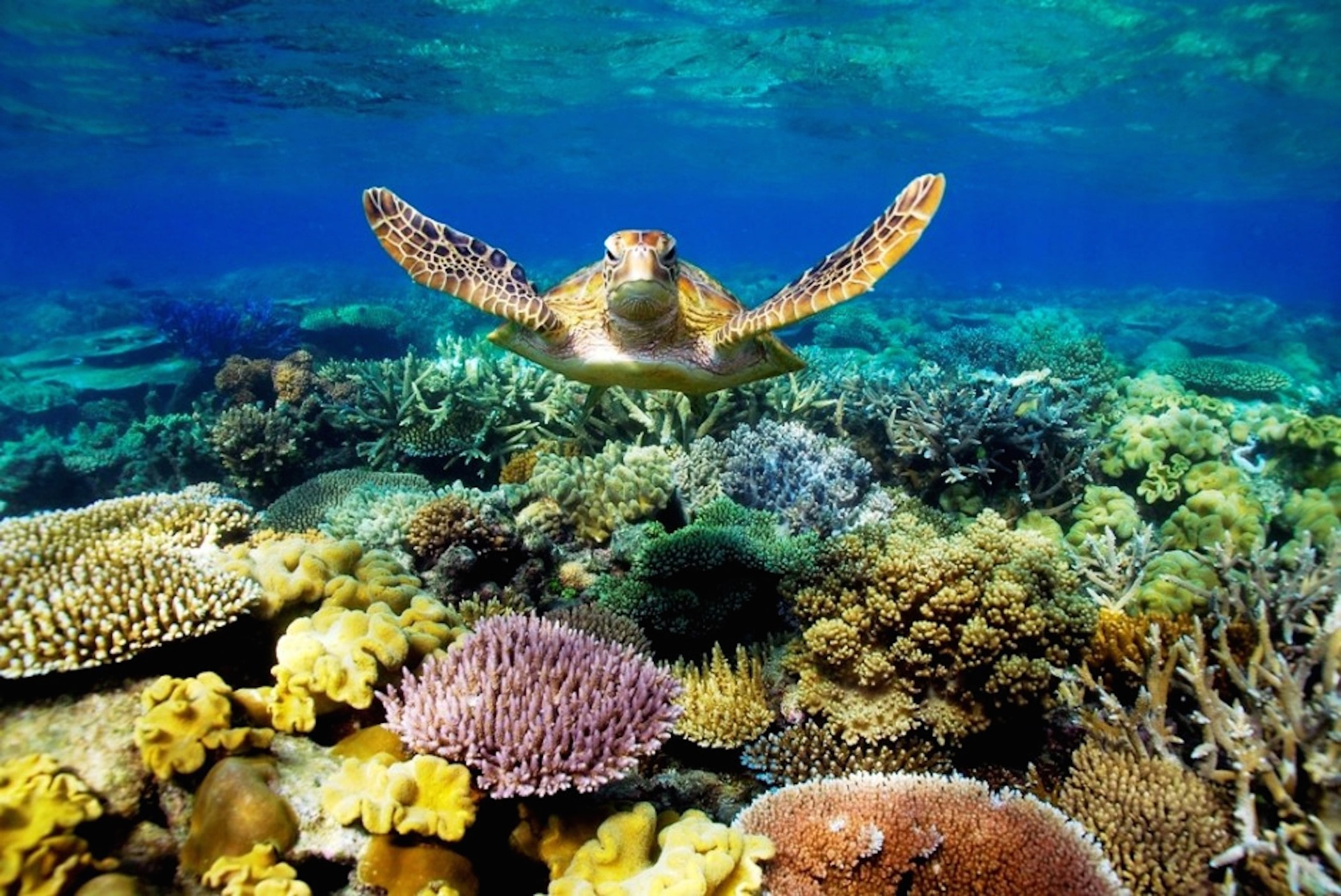Coral, the solid support or hard skeleton of solitary or colonial coelenterates. It is secreted from sea-water, and is chiefly carbonate of lime.Corals are cnidarian animals. Corals make up colorful colonies, grow in the seas and can form large reefs that harbor an ecosystem with extraordinary biodiversity.Coral reefs are abundant in the W. Indies, on the coast of Brazil, on the E. coast of Australia and in the Central Pacific.
Coral reefs are formed the petrified calcareous skeletons of polyps. They may best be subdivided into three classes, one of which often develops from the other. Fringing reefs are found extending outwards from the shore, from which they are not separated by a channel. Barrier reefs, on the other hand, are found at some distance from the shore, along which they extend at a more or less uniform distance. The greater part of such a reef is submerged, its place being marked by the line of breakers, but in places it rises above the sea level, and here sparse vegetation is found.
The channels which lie between reef and shore are of the greatest value as providing roadsteads for shipping. The greatest of barrier reefs is the Great Australian Barrier Reef off the coast of Queensland which stretches intermittently for over 1000 m. Atolls are small is. roughly circular in shape and enclosing a lagoon. These typical coral is vary greatly in size, and have sometimes a length of over 70 m. Beneath the lagoon, to which there is usually access through a gap in the encircling ring, is a floor.
The depths of these lagoons vary from a few feet to about 300, and frequently the lagoon forms a safe harbour for ships. Coral polypi flourish most in the W. Pacific and in the shallow seas near Australia, Mexico, the W. Indies and New Guinea. The reefs and is. are composed principally of rock which bears but little superficial resemblance to the organic substance which we recognize as coral.
The foundation is one of white limestone, which often further assumes a crystalline form under the influence of chemicals present in the salt water. To this are added Corals are cnidarian animals. fragments washed off from another part of the reef and rendered shapeless by pressure.
The water must be clear, not muddy. Reef forming Coral live in symbiotic association with algal plants and therefore can only flourish at shallow depths where the light is good. The rate of growth varies with the species and the condi-tions; some species build at the rate of 1 in. per year, others at the rate of 3 in. per year, and still higher rates of progress have been chronicled in certain parts. Since the growth of C. is restricted by so many conditions, the circumstances and procedure by which is. and reefs have come to their present state have been much discussed.
Geophysical work by the United States Navy on Bikini indicated that coral-line material exists to the depth of at least 600 metres below sea level. These depths are far below those at which corals can live, and suggest long-continued subsidence of the floor on which the reef was built up. An alternative hypothesis put forward by Daly postulates a general rise in sea level instead of a subsidence of the foundations. Daly’s explanation takes account of the lowering of the sea level during the Glacial Period, when much water was locked up in the ice sheets.
When the sea level was low, he suggested, marine erosion prepared platforms on which coral reefs began to grow up as the climate improved. As the sea level rose when the ice sheets melted, the growth of coral reefs kept pace with the rise, and built up a great thickness of reef material. It seems probable that both a rise in sea level and a subsidence of the foundations may have contributed to the development of thick coral reefs.
Corals always require sunlight and shallow water, usually in depths less than 70 meters . Corals are said to be the main contributors to the physical structure of coral reefs that are formed in tropical and subtropical waters, an example would be the huge Great Barrier Reef in Australia and the Mesoamerican reef found in the Caribbean Sea.There are other corals, which do not have a directly symbiotic relationship with algae, and can survive in much deeper waters and at lower temperatures, such as those of the genus Lophelia that survive to a depth of 3500 meters.
The color of a coral is usually the result of organisms or algae called zooxanthellae , which live in their tissues and give them a brown, green or orange hue. Without zooxanthellae its appearance is translucent. However, other corals have outer tissues of one or more colors such as blue, green, purple, white, orange and yellow.
The protection of corals is today a very important element in the environmental field. Some are subject to legal protection, such as the Marine Park of the Great Barrier Reef, where a large number of the organisms of the Great Australian Barrier Reef are found . Unfortunately, if the protection does not reach other coral reefs, 30 percent of those that exist today could disappear in the next 30 years.


